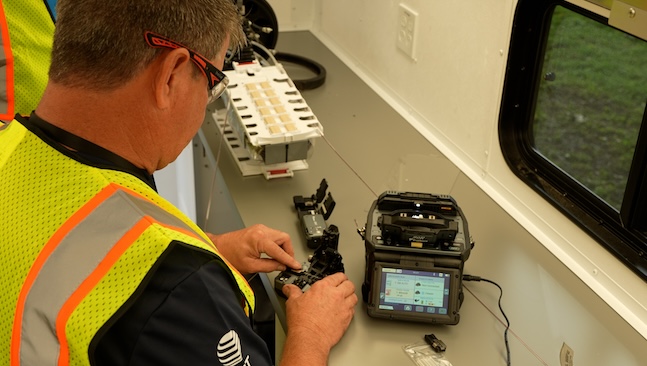AT&T achieved its goal of passing more than 30 million consumer and business locations across the US with its fibre broadband network six months ahead of schedule as it now targets 60 million by 2030.
AT&T claims the 30 million fibre passings leads the mobile industry, but rivals Verizon and T-Mobile US have been on fibre buying binges over the past year.
Verizon secured regulatory approval for its purchase of Frontier Communications’ fibre operations last month while T-Mobile is expected to close its $4.9 billion joint venture to buy Metronet over the coming weeks.
In May, AT&T agreed to acquire Lumen Technologies’ consumer fibre business for $5.75 billion, which reaches more than 4 million fibre locations across 11 states.
AT&T also beefed up its fibre holdings by striking a joint venture with private equity company BlackRock Alternatives in 2023 to expand into areas outside of the company’s traditional footprint.
In addition, last year it announced four new agreements with commercial open-access providers: Boldyn Networks, Digital Infrastructure Group, PRIME FiBER and Ubiquity to offer fibre and 5G services to more customers in service areas without existing fibre options.
From 2020 to 2024, AT&T deployed thousands of miles of fibre optic infrastructure to connect communities and businesses nationwide and invested more than $145 billion in its wireless and wireline networks, including capital investments and acquisitions of wireless spectrum.
Since the beginning of 2020, AT&T has passed millions of new fibre locations and added 5.7 million AT&T Fiber broadband customers.
Convergence
AT&T CEO John Stankey is a big believer in the convergence of mobile and fibre services. During the company’s Q1 earnings call, he stated four out of ten fibre customers are now choosing its wireless offerings
He stated passing the 30 million milestone “is a testament to our team’s hard work over many years to build the nation’s largest and fastest-growing fibre broadband network”.
Despite the fibre activity by the nation’s largest mobile operators, MoffettNathanson senior MD Craig Moffett explained in research notes each of their fibre footprints cover less than 15 per cent of their national wireless footprints, and collectively cover less than half of the US. This is significantly less than cable operators Comcast and Charter Communications.
